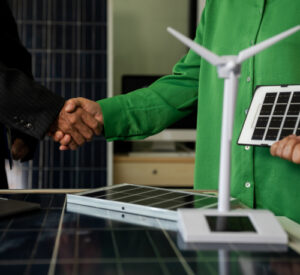
Africa is no stranger to gold, it has shaped economies, adorned kings, and anchored currencies across the continent for centuries. But now, gold is quietly finding a new role, as a key material in the global push for green energy.
As the world shifts toward renewables and low-carbon technologies, demand for specific minerals, like lithium, cobalt, and rare earth elements, has soared. But gold is also essential in clean energy systems, especially in solar technology, fuel cells, and the intricate electronics of next-gen batteries and electric vehicles.
For Africa, which holds some of the richest gold reserves on the planet, this creates both a challenge and a unique opportunity. Can the continent position its gold sector as part of the green energy supply chain? And what would it mean for policy, investment, and sustainable mining?
How Gold Powers Green Innovation
Gold’s high conductivity, corrosion resistance, and malleability make it indispensable in technologies that underpin the green energy transition.
Solar Panels and Photovoltaics
Gold is used in high-efficiency solar panels as a conductor within photovoltaic cells. While alternatives like copper and silver are more common, gold’s superior performance in certain configurations makes it valuable in premium solar systems, including those used in satellites and cutting-edge installations.
Hydrogen Fuel Cells
Gold catalysts are being researched and deployed in hydrogen fuel cell technology, one of the cleanest energy sources available. These fuel cells convert hydrogen into electricity, emitting only water as a by-product. Gold’s resistance to corrosion in acidic environments makes it ideal in the cell’s membrane.
Electric Vehicles (EVs)
From circuit boards to sensors and high-frequency connectors, gold is used in multiple parts of electric vehicles, particularly in safety-critical and high-performance systems.
Grid and Energy Storage Systems
Gold helps improve the efficiency and reliability of energy storage systems, including advanced battery technologies used in solar microgrids and wind backup systems.
While traditional gold demand from jewellery and finance remains dominant, technological demand, especially from green sectors, is expected to grow steadily over the next decade. As clean energy projects expand globally, the need for gold in electronic and energy applications will rise. For Africa, which produced over 900 tonnes of gold in 2023, this presents a chance to diversify how its gold is marketed, consumed, and valued.
Africa’s Green Leap, Can Gold Be Part of the Story?
 The green energy conversation in Africa often centres on solar power potential, hydroelectricity, and the need to electrify off-grid communities. What’s less discussed is the role of African minerals, including gold, in fuelling those very systems.
The green energy conversation in Africa often centres on solar power potential, hydroelectricity, and the need to electrify off-grid communities. What’s less discussed is the role of African minerals, including gold, in fuelling those very systems.
Many African countries, including Ghana, Burkina Faso, Mali, Tanzania, and South Africa, already have robust gold industries. If properly aligned, these sectors could feed both global clean tech supply chains and local energy infrastructure development.
Imagine this, a gold mine in Ghana not only produces bullion but also supplies precision components for solar manufacturing in Kenya, fuelling regional energy self-sufficiency. Or South African refineries exporting green-certified gold for EV production in Europe, backed by traceability tech and ESG (Environmental, Social, Governance) audits.
As the clean energy market grows more ethically conscious, so too does the pressure for responsibly sourced minerals. Gold destined for green tech will increasingly require traceability, proof that it was mined under fair, sustainable, and environmentally sound conditions.
Africa can lead here, but it must invest in:
- Supply chain transparency tools such as blockchain or QR-linked provenance.
- Green certification standards for gold used in clean energy applications.
- Independent audits to verify ESG compliance, especially for exports to Europe and North America.
This approach not only opens new markets but also attracts ESG-focused investment from funds prioritising sustainable mineral sourcing. Long-term, the smartest gold investments may not be in raw exports, but in firms or regions positioned to feed the clean energy boom.
Gold’s Evolving Role in a Greener Africa
Gold is often seen as a symbol of the past, of kings, empire, and tradition. But its role in Africa’s future may be just as critical. In an age where sustainable power is the new global currency, gold’s technical value in clean energy systems is quietly reshaping its importance. For Africa, this is more than a niche trend, it’s a strategic opportunity.
With the right vision, infrastructure, and investment, the continent can position its gold sector not just as a source of wealth, but as a driver of its green transition. As the world transitions toward renewable energy, the materials that power this shift are being redefined. Gold, long valued for its beauty and stability, is increasingly prized for its conductivity, resilience, and role in green technology. For Africa, this signals a new chapter: where gold no longer just reflects the sun, but helps capture and store its power.



